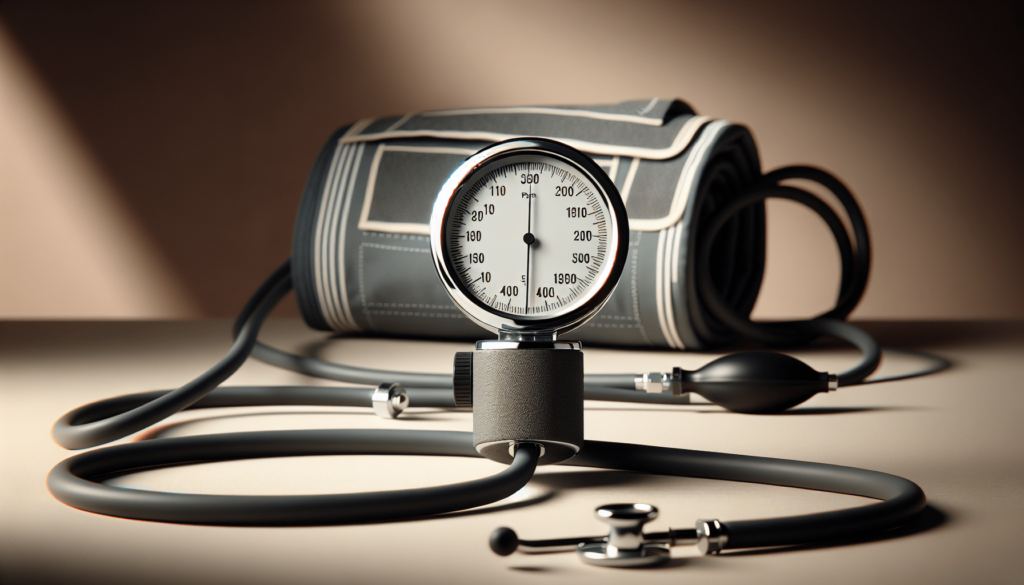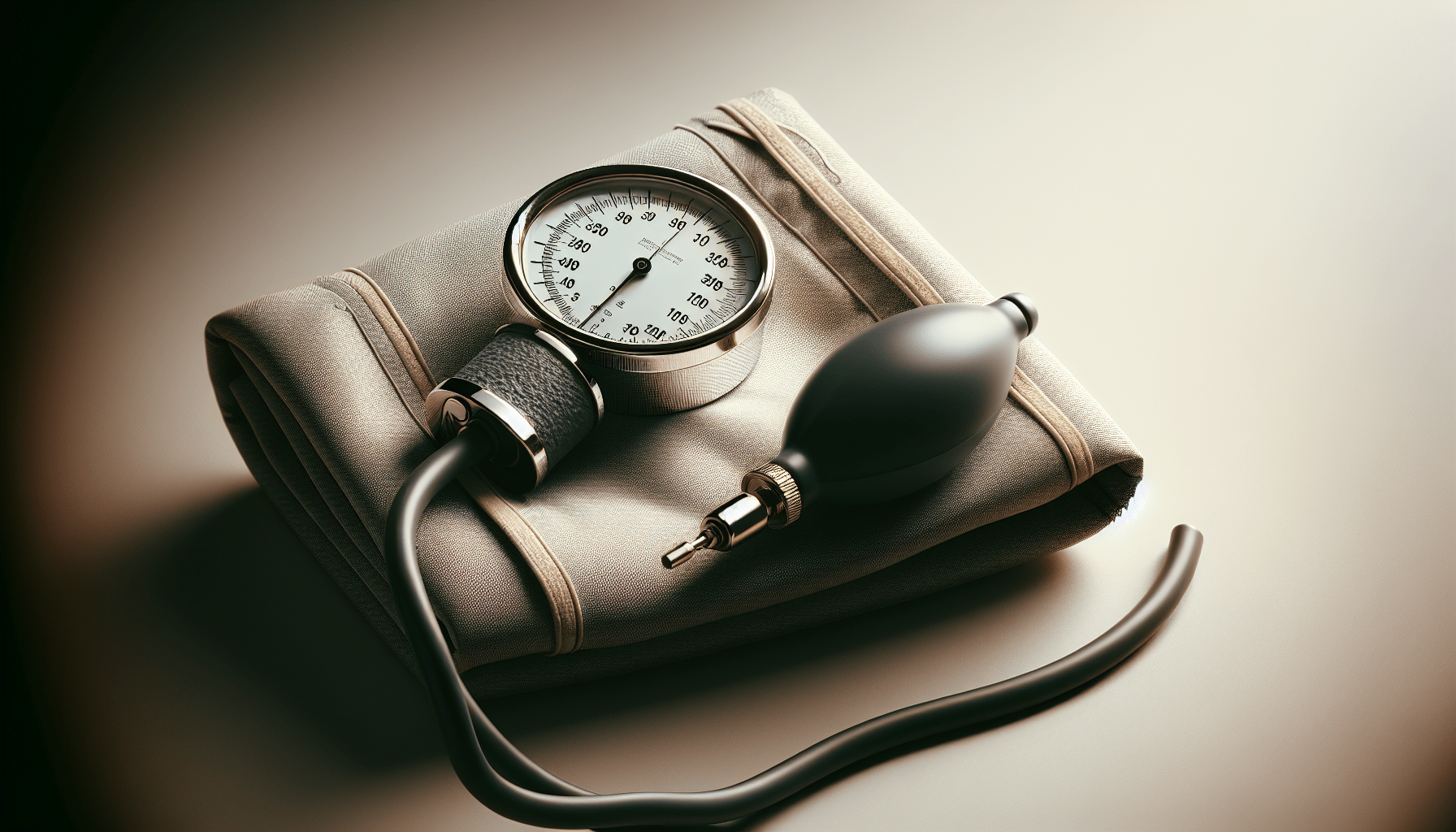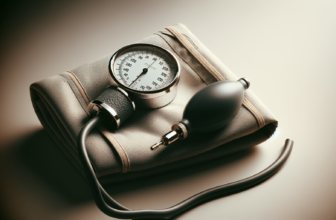
Have you ever wondered how healthcare professionals determine your blood pressure? Understanding blood pressure measurement is essential because it can reveal much about your overall health. Let’s break down this important topic together.

What is Blood Pressure?
Blood pressure is the force exerted by circulating blood against the walls of your arteries. It’s a vital sign that gives clues about your heart health and can indicate whether you’re at risk for conditions like heart disease or stroke. It’s measured in millimeters of mercury (mmHg) and expressed with two numbers: systolic and diastolic.
Systolic vs. Diastolic Blood Pressure
- Systolic blood pressure is the top number. It measures the pressure in your arteries when your heart beats and pumps out blood.
- Diastolic blood pressure is the bottom number. It measures the pressure in your arteries when your heart is resting between beats.
For example, if your blood pressure reads 120/80 mmHg, that means your systolic pressure is 120 mmHg, and your diastolic pressure is 80 mmHg.
Why is Blood Pressure Measured?
Measuring blood pressure is crucial for various reasons. It helps to:
- Identify hypertension (high blood pressure) or hypotension (low blood pressure).
- Assess your heart health and cardiovascular risk.
- Monitor the effectiveness of medications or lifestyle changes.
Regular measurements can lead to early detection of issues and more effective management of your health.
How is Blood Pressure Measured?
Now that we understand the importance of blood pressure, let’s take a closer look at how it’s measured.
1. The Instruments Used
The primary instrument for measuring blood pressure is called a sphygmomanometer. It’s often used alongside a stethoscope. Here’s a quick overview of the instruments:
| Instrument | Description |
|---|---|
| Sphygmomanometer | A device that inflates to constrict blood flow and measures pressure. |
| Stethoscope | Used to listen to heart sounds and detect blood flow. |
2. Types of Blood Pressure Monitors
There are different types of blood pressure monitors that you might encounter. Each has its advantages and specific usage scenarios:
A. Manual Blood Pressure Monitors
These require a healthcare professional to operate. The sphygmomanometer is inflated manually, and a stethoscope is used to listen to arterial blood flow. It allows for precise measurements but requires proper technique.
B. Digital Blood Pressure Monitors
These are user-friendly and can be used at home. They automatically inflate and measure blood pressure, displaying the results on a digital screen. They are convenient for regular monitoring.
C. Ambulatory Blood Pressure Monitors
These devices are worn for 24 hours and take measurements at regular intervals. This can provide a more comprehensive view of blood pressure changes throughout the day and night.
3. The Measurement Procedure
Whether in a clinic or at home, the measurement procedure generally follows these steps:
A. Preparation
The person being measured should be seated comfortably with their back supported. Feet should be flat on the floor, and the arm being used for the measurement should be resting at heart level. It’s best to avoid caffeine, heavy meals, or exercise for at least 30 minutes before the measurement.
B. Applying the Cuff
The healthcare provider will wrap the blood pressure cuff snugly around your upper arm, with the lower edge of the cuff about an inch above the elbow. The cuff should not be too tight or too loose.
C. Measuring Blood Pressure
- In a manual measurement, the provider will inflate the cuff by squeezing a bulb until blood flow is stopped.
- They will then slowly release the pressure, listening with a stethoscope for the first heartbeat (systolic) and when the heartbeat sound disappears (diastolic).
For digital monitors, the cuff inflates automatically, and the device will display the systolic and diastolic pressures on the screen.
4. Interpreting Blood Pressure Readings
Understanding what those numbers mean is the next step. Here’s a simple breakdown of blood pressure categories:
| Category | Systolic (top number) | Diastolic (bottom number) |
|---|---|---|
| Normal | Less than 120 | Less than 80 |
| Elevated | 120-129 | Less than 80 |
| Hypertension Stage 1 | 130-139 | 80-89 |
| Hypertension Stage 2 | 140 or higher | 90 or higher |
| Hypertensive Crisis | Higher than 180 | Higher than 120 |
Knowing where your blood pressure falls in these categories can help you understand your health better.
Factors Affecting Blood Pressure
Your blood pressure can be influenced by various factors. Recognizing these can help you make informed decisions about managing your health. Common factors include:
1. Age
As you age, your arteries may stiffen, which can lead to increased blood pressure.
2. Weight
Being overweight or obese can put additional strain on your heart and blood vessels, potentially leading to higher blood pressure.
3. Physical Activity
Regular physical activity can help maintain healthy blood pressure levels, while a sedentary lifestyle may contribute to elevated readings.
4. Stress
Chronic stress can lead to temporary increases in blood pressure. Finding effective stress-reducing activities can be beneficial.
5. Diet
A diet high in salt, saturated fats, and cholesterol can contribute to high blood pressure. Incorporating more fruits, vegetables, and whole grains can help improve levels.
6. Alcohol and Smoking
Excessive alcohol consumption and smoking can both elevate blood pressure. Quitting smoking and moderating alcohol intake can be significant steps toward healthier measurements.
Monitoring Blood Pressure at Home
Keeping track of your blood pressure at home can provide valuable insights into your health. Here are some tips for effective monitoring:
1. Choose the Right Monitor
Select a blood pressure monitor that fits your arm properly and is easy to use. Automatic digital monitors are typically recommended for at-home use.
2. Take Measurements Regularly
Measure your blood pressure at the same time each day to maintain consistency. This can provide a clearer picture of any trends.
3. Record Your Readings
Keep a log of your blood pressure readings along with the date and time. This information can be helpful for your healthcare provider.
4. Know When to Seek Help
If your readings consistently fall into the hypertension category, or if you experience symptoms like headaches or dizziness, reach out to your healthcare provider for guidance.
Understanding Blood Pressure Variability
Blood pressure can change based on various factors, including activity level, time of day, and even mood. Variability is not unusual; however, knowing what is considered normal for you can help in identifying any potential health issues.
The Importance of Regular Check-ups
Routine check-ups with your healthcare provider can help track your blood pressure over time. Regular evaluations can provide insights into whether you need any lifestyle changes or medications.
Lifestyle Changes to Manage Blood Pressure
Making lifestyle changes can dramatically affect your blood pressure readings. Here are some actionable steps:
1. Adopt a Heart-Healthy Diet
Focus on a diet rich in fruits, vegetables, whole grains, lean proteins, and healthy fats. The DASH (Dietary Approaches to Stop Hypertension) diet is specifically designed to help manage blood pressure.
2. Exercise Regularly
Aim for at least 150 minutes of moderate aerobic activity each week. Activities can include walking, cycling, swimming, or any enjoyable physical activity.
3. Maintain a Healthy Weight
If you’re overweight, even a modest weight loss can help lower blood pressure. Focus on a balanced diet and regular exercise to achieve and maintain a healthy weight.
4. Limit Alcohol Intake
If you consume alcohol, do so in moderation. This generally means up to one drink per day for women and up to two drinks per day for men.
5. Quit Smoking
If you smoke, seek resources to help you quit. Your blood pressure can improve after quitting, and you’ll reduce your risk for numerous health issues.
6. Manage Stress Levels
Practice stress management techniques like yoga, deep breathing, or meditation. Reducing stress can have a direct impact on your blood pressure.
Medication for High Blood Pressure
In some cases, lifestyle changes alone may not be enough to manage blood pressure. Your healthcare provider may recommend medications, which can include:
- Diuretics: Help the body eliminate excess sodium and water.
- ACE Inhibitors: Relax blood vessels by blocking the formation of a hormone that narrows them.
- Beta-blockers: Reduce heart rate and the workload on the heart.
- Calcium channel blockers: Relax blood vessels and reduce the heart’s workload.
It’s essential to follow your healthcare provider’s directions regarding medication and to discuss any side effects.
In Summary
Understanding how blood pressure is measured and the factors that influence it can empower you to take charge of your health. Regular monitoring and lifestyle adjustments can lead to significant improvements in your blood pressure readings. Don’t hesitate to reach out to your healthcare provider for guidance tailored to your specific circumstances, as they can help you develop a personalized plan to maintain healthy blood pressure levels.
Taking proactive steps now can lead to a healthier future, improving your overall well-being and potentially reducing your risk of serious health conditions. So, keep measuring, stay informed, and embrace a heart-healthy lifestyle!







